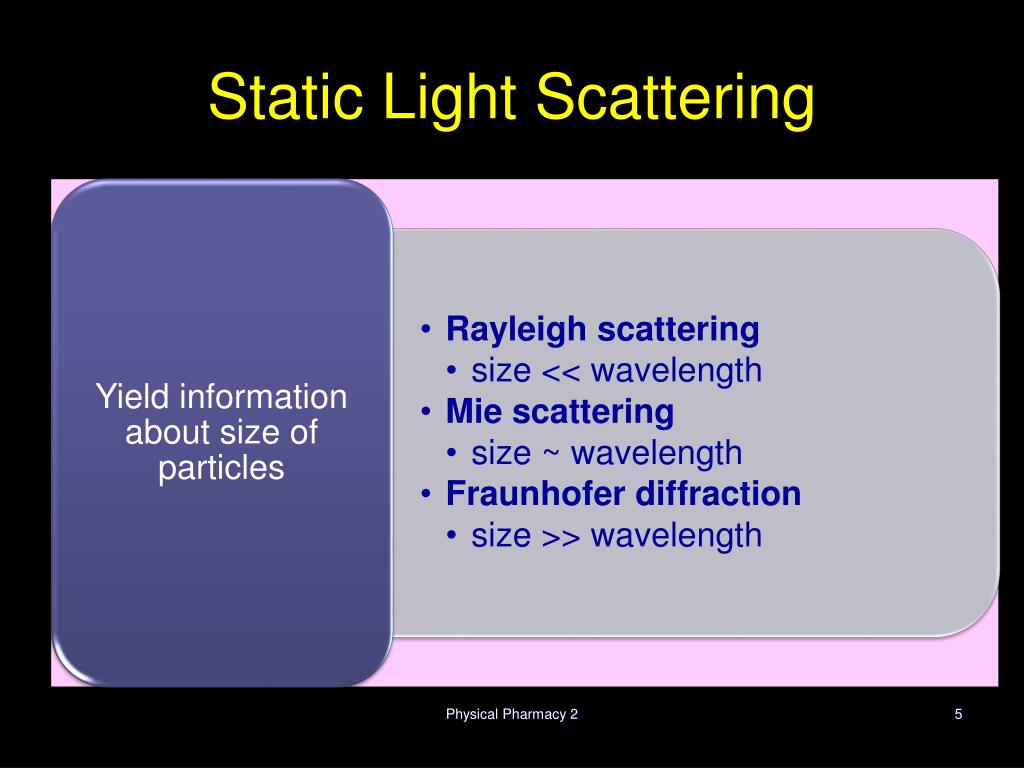

- #DYNAMIC LIGHT SCATTERING VS LASER DIFFRACTION UPGRADE#
- #DYNAMIC LIGHT SCATTERING VS LASER DIFFRACTION FULL#
- #DYNAMIC LIGHT SCATTERING VS LASER DIFFRACTION REGISTRATION#
- #DYNAMIC LIGHT SCATTERING VS LASER DIFFRACTION PRO#
- #DYNAMIC LIGHT SCATTERING VS LASER DIFFRACTION SOFTWARE#
Thus there is an optimum angle of detection for each particle size. Particles of different sizes scatter with different intensities depending on the scattering angle. The decay rate depends on the wave vector and thus the scattering angle. Some important points to be considered are listed below. Some obvious, such as the quality of the components (the laser, the detector, the correlator.), other factors are not as straightforward but may influence the measurement significantly. The quality of a DLS measurement depends on several factors. Because fluctuation is typically in the range of nanoseconds to milliseconds, electronic hardware is typically faster and more reliable at this job. For more details on the theory of Dynamic Light Scattering please visit our DLS theory page.
#DYNAMIC LIGHT SCATTERING VS LASER DIFFRACTION SOFTWARE#
The correlation of the intensity can be performed by electronic hardware ( digital correlator) or software analysis of the photon statistics. Where k B is the Boltzmann-Konstant, T the temperature, and η the viscosity. The diffusion coefficient D is then related to the radius R of the particles by means of the Stokes-Einstein Equation: Experimentally one characterizes intensity fluctuations by computing the intensity correlation function g 2(t), whose analysis provides the diffusion coefficient of the particles (also known as diffusion constant). Analysis of the fluctuation of the scattered light thus yields information about the particles.
#DYNAMIC LIGHT SCATTERING VS LASER DIFFRACTION FULL#
More elaborated multi-angle instruments can determine the full particle size distribution.įrom a microscopic point of view, the particles scatter the light and thereby imprint information about their motion. Simple DLS instruments that measure at a fixed angle can determine the mean particle size in a limited size range. The basic principle is simple: The sample is illuminated by a laser beam and the fluctuations of the scattered light are detected at a known scattering angle θ by a fast photon detector. Typical applications are emulsions, micelles, polymers, proteins, nanoparticles, or colloids. In the case of postponement, you will be notified by email.Dynamic Light Scattering (DLS, also known as Photon Correlation Spectroscopy or Quasi-Elastic Light Scattering) is one of the most popular light scattering techniques because it allows particle sizing down to 1 nm diameter. We reserve the right to postpone the workshop due to unforeseen circumstances.Limited slots available, on first-come, first-served basis.
#DYNAMIC LIGHT SCATTERING VS LASER DIFFRACTION REGISTRATION#

#DYNAMIC LIGHT SCATTERING VS LASER DIFFRACTION UPGRADE#
#DYNAMIC LIGHT SCATTERING VS LASER DIFFRACTION PRO#
This course is designed for users of the Zetasizer Advance Lab, Pro or Ultra.īy the end of the workshop, you should be equipped with the skills set to: Join us to advance your knowledge and analytical skills for optimal productivity of your Zetasizer Instrument. Our expert will dive into the basic principles of light scattering, share practical tips via a live measurement of customers’ sample and talk about supporting techniques for nanoparticle analysis. This is a physical 2-day training course.


 0 kommentar(er)
0 kommentar(er)
